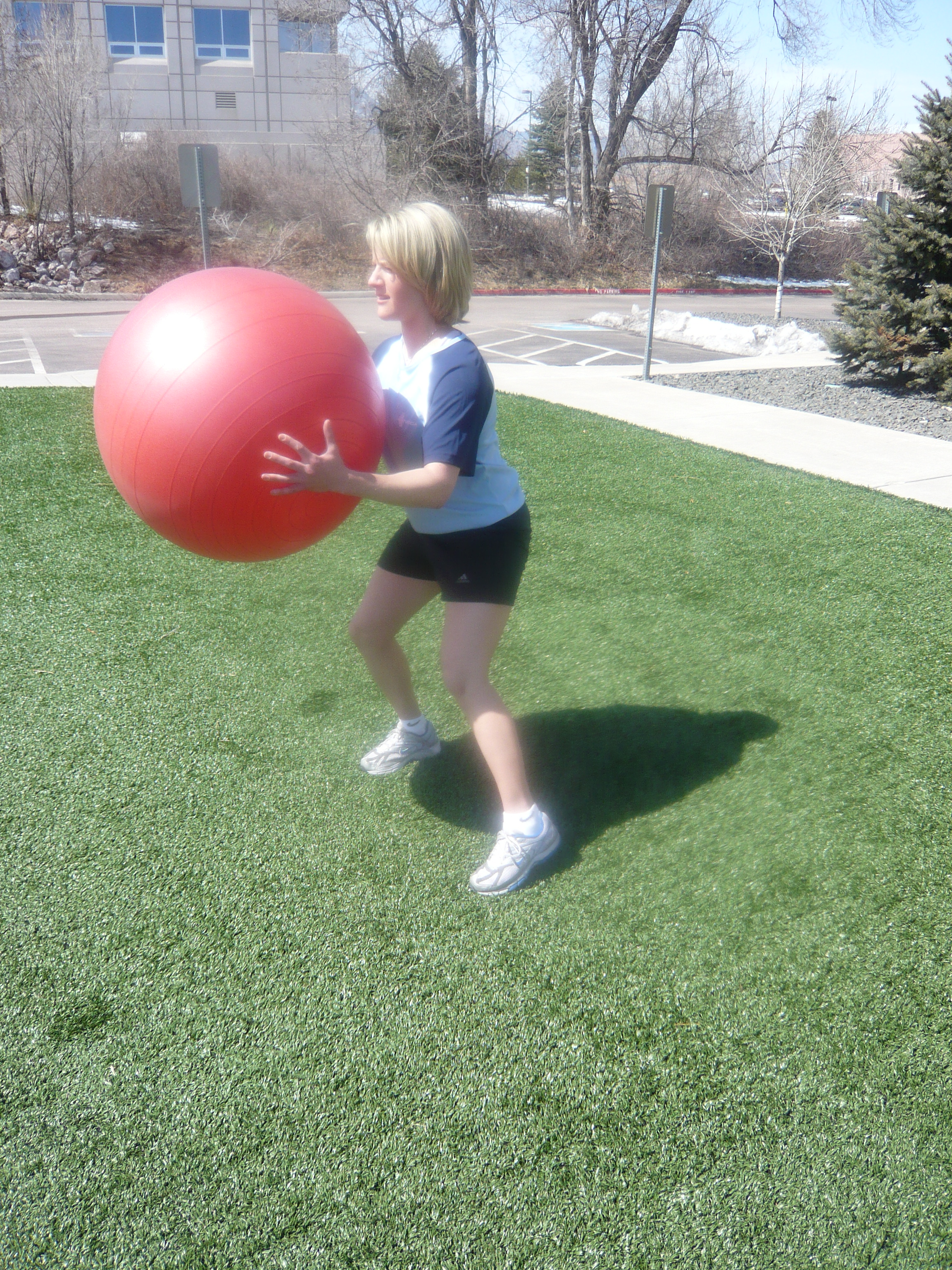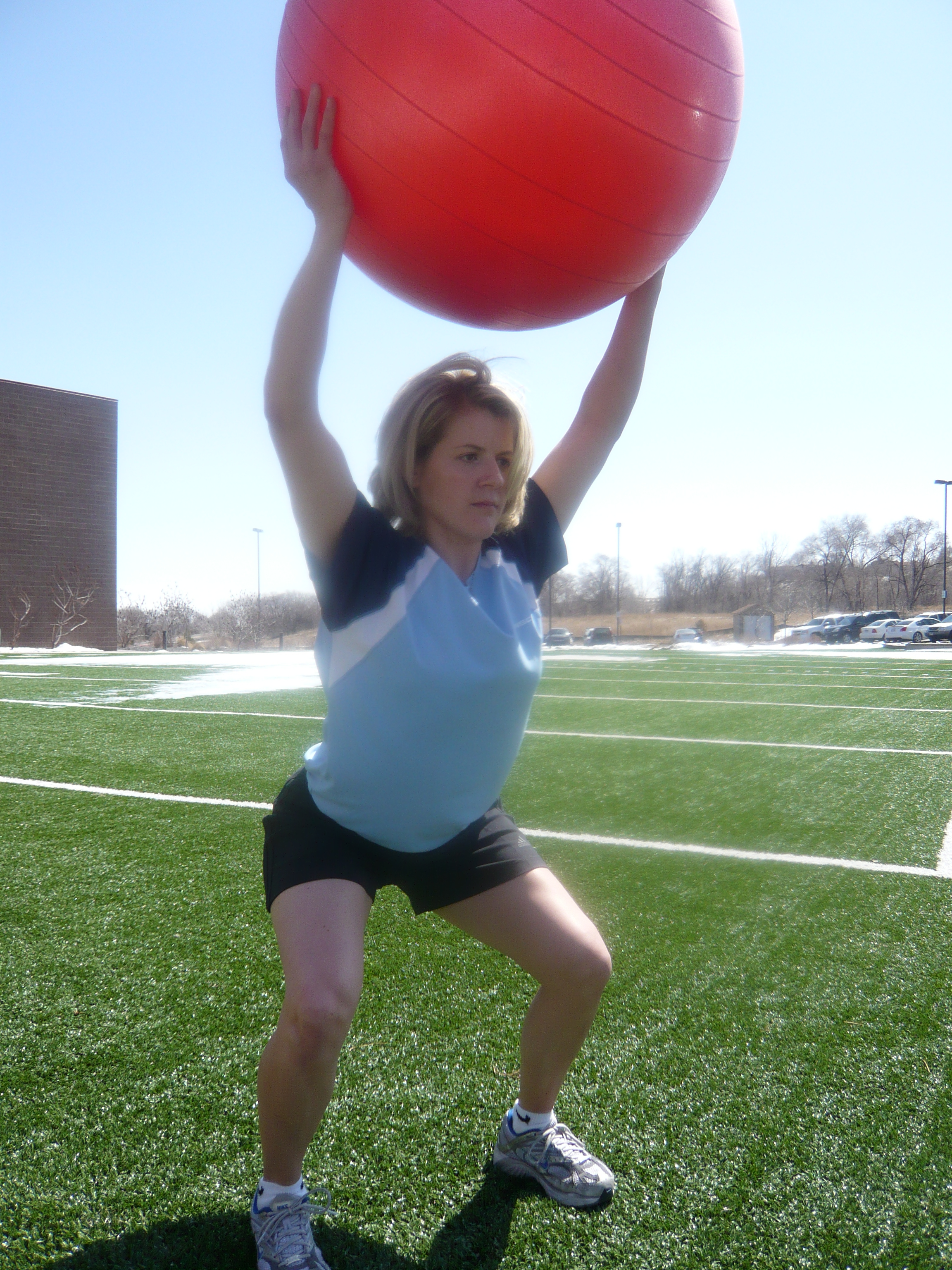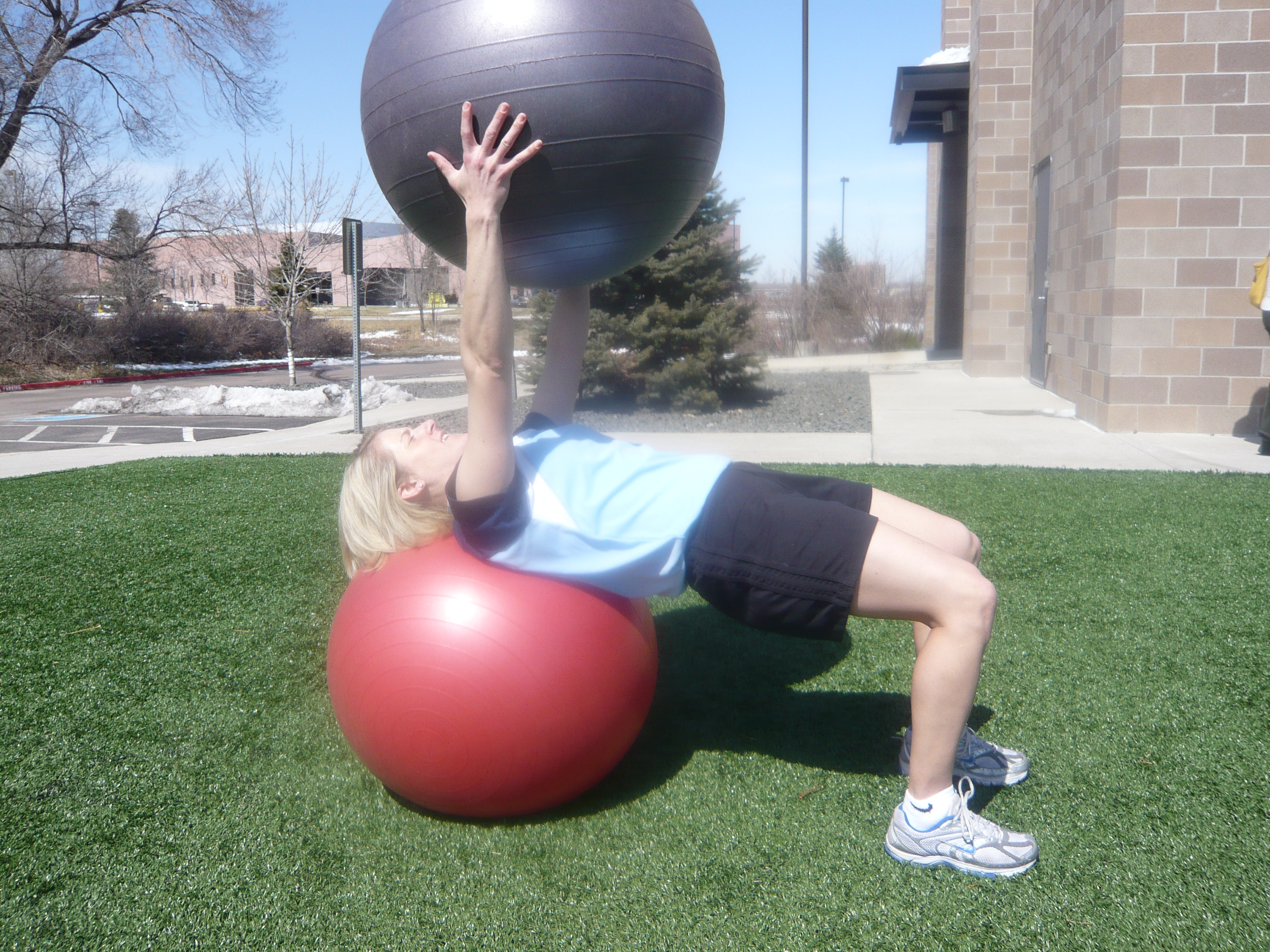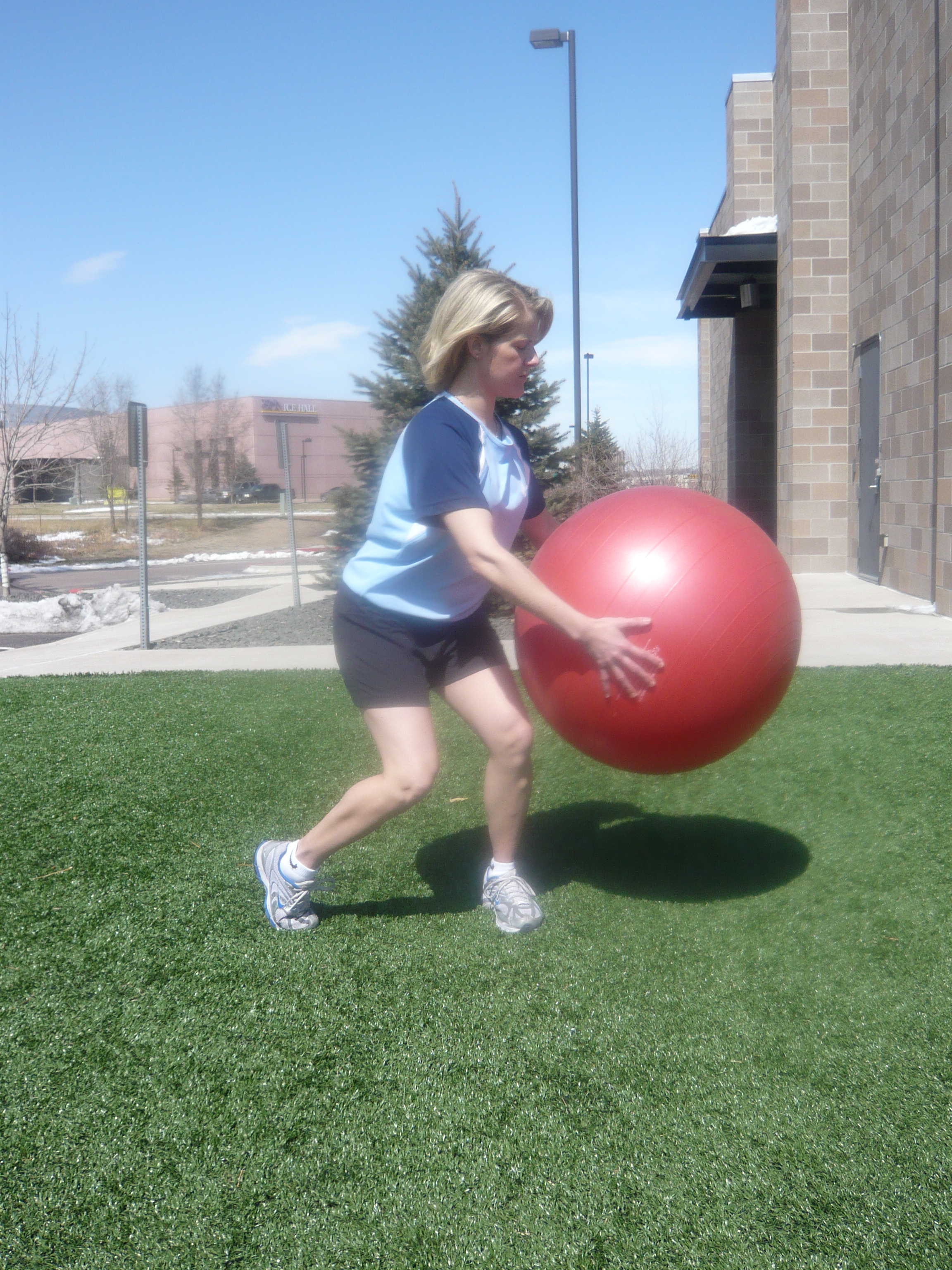| Water-filled Swiss ball active resistance training as part of a comprehensive program By Jay Dawes and Diane Vives | ||||||||||||||||||||||||||||||||||||||
| Over the last several years, the use of water-filled implements, such as kegs, logs, bars and even dumbbells, has become a popular training modality in many strength and conditioning facilities. These training apparatus provide a form of resistance referred to as "active resistance" or "dynamic resistance" because the water inside the implement is constantly moving while the exercise or drill is being performed. Thus, as an individual performs a complete exercise movement, the water inside the device continues to shift. As position and velocity change throughout the exercise movement, a destabilizing effect is created by the small and large perturbations caused by the water striking the inside of the implement. These perturbations increase the stability demands placed on the muscles of the trunk and the surrounding joints. And because this type of training enhances the need for joint and core stability, incorporating this method of training into a comprehensive training program may also help reduce the risk of many types of injuries. While the utilization of water-filled implements is gaining popularity amongst many strength and conditioning professionals and fitness enthusiasts, the use of these devices may be problematic in a health club setting due to a variety of safety concerns and the availability of such equipment. Consequently, the use of water-filled Swiss balls are a safe and effective alternative to traditional water-filled training devices. Creating an H2O Ball In order to create an H2O ball, you must first must inflate a Swiss ball to the desired size, then press the end of a common garden hose firmly against the ball's inflation site. Once in place, simply turn the hose on, add approximately five to 20 pounds of water, then use the plug provided by the manufacturer to seal the ball. Remember, depending on the exercises selected, a large amount of resistance is not necessarily required for this method of training to be effective. Sample Exercises The following are examples of several exercises from the four pillars of human movement that can be used by the strength and conditioning professional to challenge athletes/clients at a variety of levels. Pillar 1: Standing and Locomotion Pillar one is the foundation of human function and involves moving the body from one place to another. The following exercises are examples of pillar one drills that can be incorporated as a dynamic warm-up prior to activity or as standalone exercises as well. Farmer's Walk Begin by setting up two cones approximately 10' apart. While holding an H2O ball under each arm, walk down and back between each cone for 60'. Lateral Shuffles
Pillar 2: Level Changes When raising or lowering our center of mass, such as in lunging, squatting or reaching, we are working in pillar two. Pillar two requires a reduction of force (gravity), which loads the body in preparation to produce force. The primary focuses of these exercises is enhancing total-body dynamic stability, strength and power and providing a solid foundation for more efficient and complex movement patterns. Overhead Squats
Speed Squats Holding an H2O ball against the chest, perform 10-15 squats as quickly as possible while maintaining proper squat technique and form. Pillar 3: Pushing and Pulling Pillar three movements involve pushing and pulling and primarily focus on upper-body movements. They combine very naturally with pillar one and two exercises to train the entire kinetic chain. Squat with Overhead Press Begin by performing a squat, and add an overhead press on the ascent to incorporate both pillars two and three and create a great total-body combination exercise. Pullovers
Pillar 4: Rotation Rotation is one of the most important actions of the human body, thus, in order to develop a comprehensive training program, rotational stability, strength and power must be addressed in the exercise prescription. Diagonal Chops
Russian Twists
Program Design The goal of any periodized plan is to overload the body for optimal returns in adaptations of stability, strength and power. The emphasis is placed on creating a systematic progression of phases in the hopes of reaching optimal training without reaching the point of injury or over-training. Take a look at the following charts to compare the strategies with the familiar periodization strategies.  When looking at how the strategies are used to focus on specific training goals, we can follow a program planning method most of us agree delivers results. You can see how the strategies apply cleverly, yet flexibly with familiar periodization schemes. For example, hypertrophy can be gained by using the target set as well as the strength to stability set. Take a look at the intensity and volume ranges as well as work/rest ratios if working with groups that are in the presented in the following chart.  Using Active Resistance for Transitions The creative use of active resistance for transitions is a great strategy to keep the overall intensity of the workload high while also allowing for some recovery. This strategy can be seen when using a lower-body strength movement such as dumbbell lunge, followed by a stability movement such as active resistance for pillar four (rotation) for active recovery. The main function of transitions is to keep "all systems going" without further taxing the prime movers of the focus exercise -- this is also known as active recovery. For transitions, we must remember that these exercises are targeting active recovery, so we will choose an exercise and resistance that will be of low to moderate intensity. This will allow the system to not get overtaxed and hinder the success of the following exercise. For volume, we choose within the range of 10-20 repetitions. If you are using a timed circuit, stay with the same work-to-rest ratio for that circuit. Always encourage an even and controlled pace of movement. Jay Dawes MS, CSCS*D, NSCA-CPT*D, FNSCA, is the owner of Dawes Strength and Conditioning and a PhD candidate at Oklahoma State University in health and human performance/exercise science. Diane Vives, MS, CSCS*D, is the president of Vives Training Systems and the owner of Fit4Austin in Austin, Texas. Diane serves on the Under Armour TNP Performance Training Advisory Council. |













